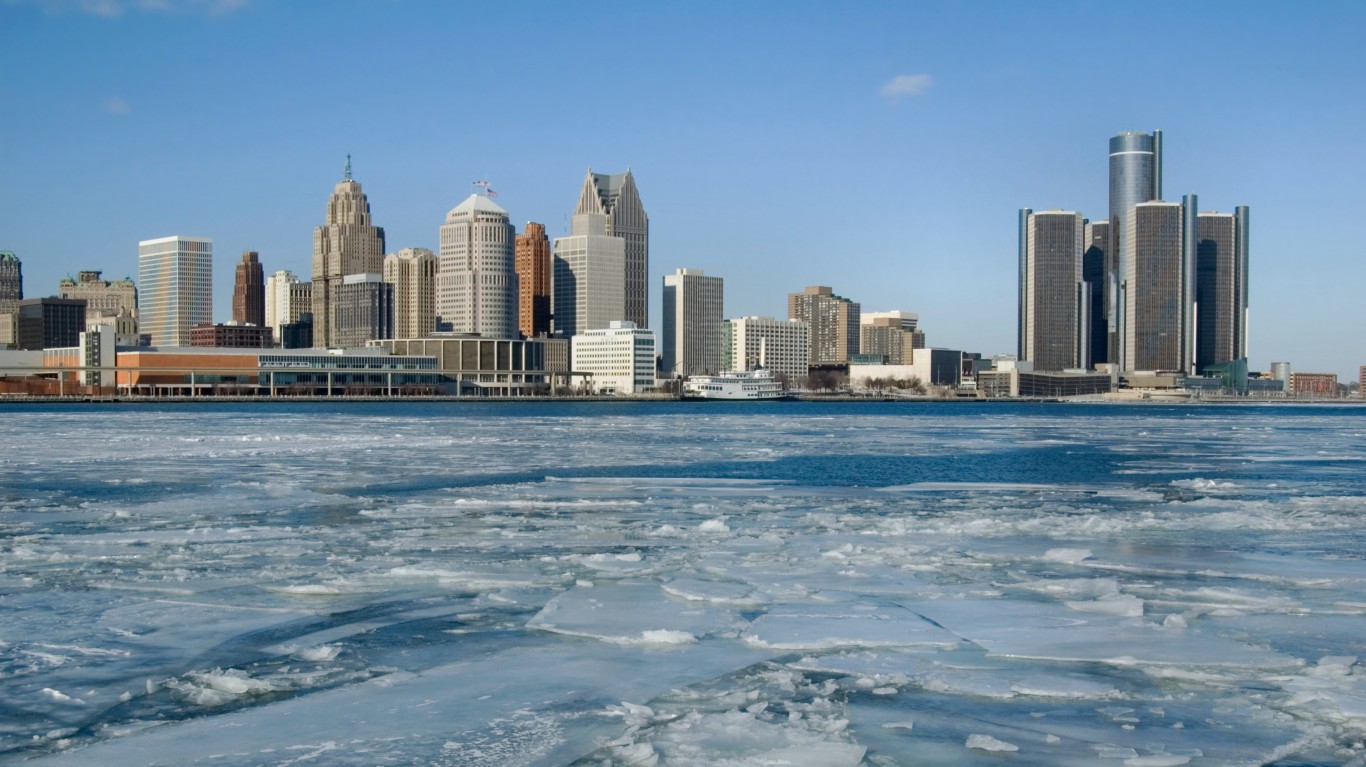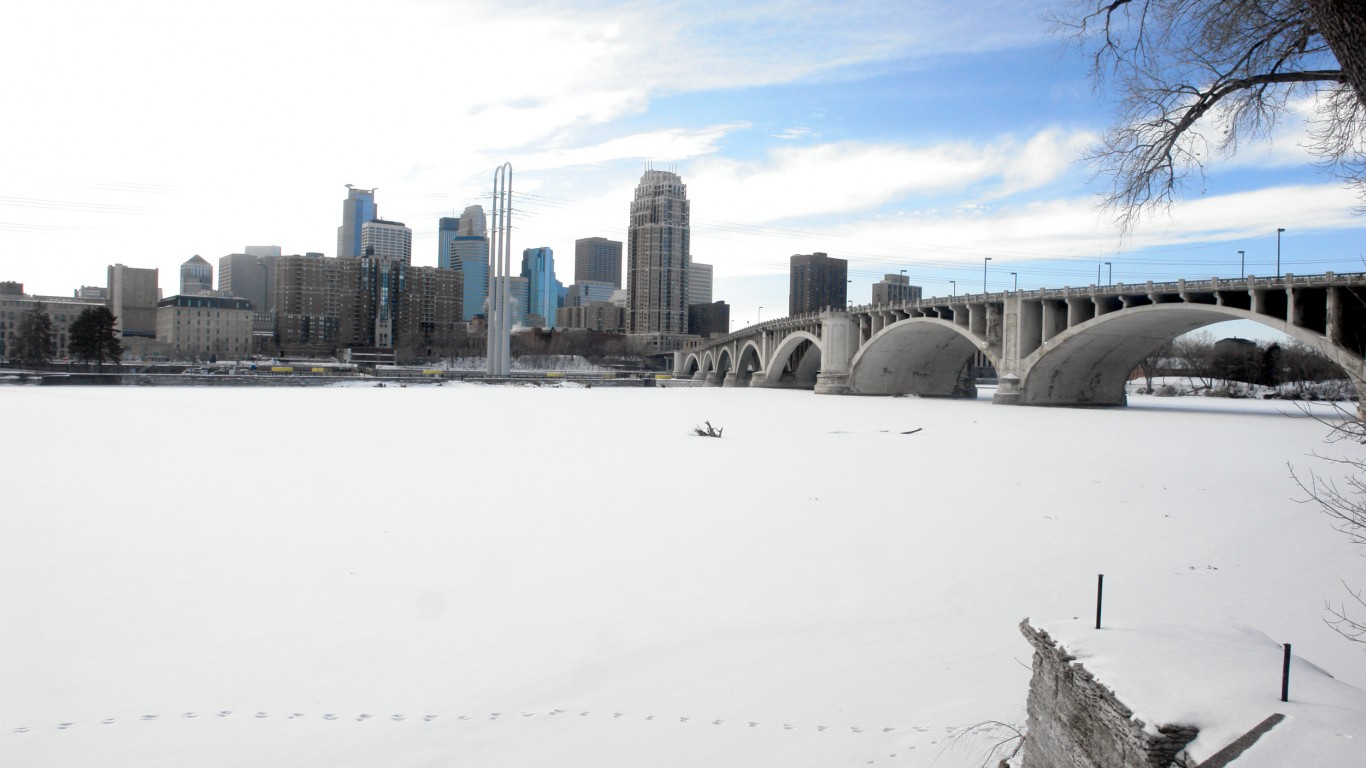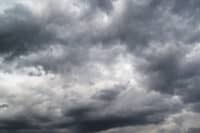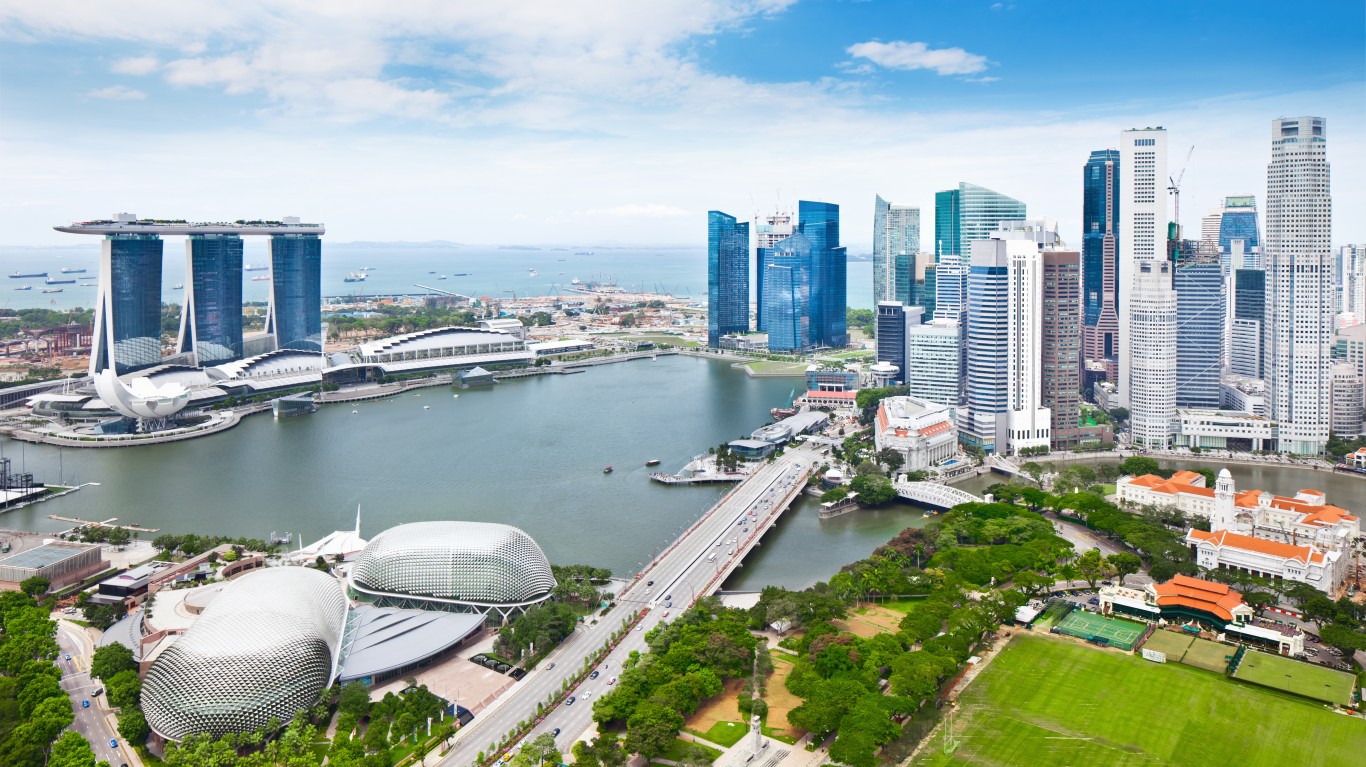
Some people love humidity, while others absolutely cannot stand it. While it might be a perk or a minor inconvenience for some while on vacation, it can be a deal breaker or even a health hazard for others. Certain diseases, parasites, and insects that spread infection thrive in humid climates, particularly in areas that are hospitable to mosquitos. These can spread Zika, Malaria, and other diseases to visitors. If you’re looking to travel somewhere, or move somewhere new, consider the humidity of the area before you go. But which are the most humid countries in the world?
For this list, we will use data from the United Nations and Climate Data organization. The list is arranged by highest average humidity, not the highest humidity reached during the year. While some countries can have times of extremely high humidity, other times of low humidity will result in a low average humidity for the year.
It is important to remember, however, what we mean by humidity, how it is calculated, and what it actually is. There are two ways of calculating humidity: absolute humidity and relative humidity. Absolute humidity is how much water is actually in the air. It can range from zero (or near zero) to around 30 grams per cubic meter of air when it is 86 degrees Fahrenheit (30 Celsius). Unless you are a scientist or a researcher, however, you will almost never hear or use absolute humidity. Instead, you will use relative humidity.
When you see humidity expressed as a percentage, it is relative humidity. Relative humidity is the ratio of how much water is actually in the air compared to how much water the air could possibly hold. For example, if a local news station says that the local humidity is 30%, that means that the air outside holds about 30% of the water it could hold given current conditions. Remember, though, that the limit of how much water air can hold will change drastically based on temperature, elevation, and many other factors. Higher relative humidity levels increased the perceived temperature of the air as well, making hot climates feel even hotter. That being said, here are the 12 most humid countries in the world.
#12 Papua New Guinea
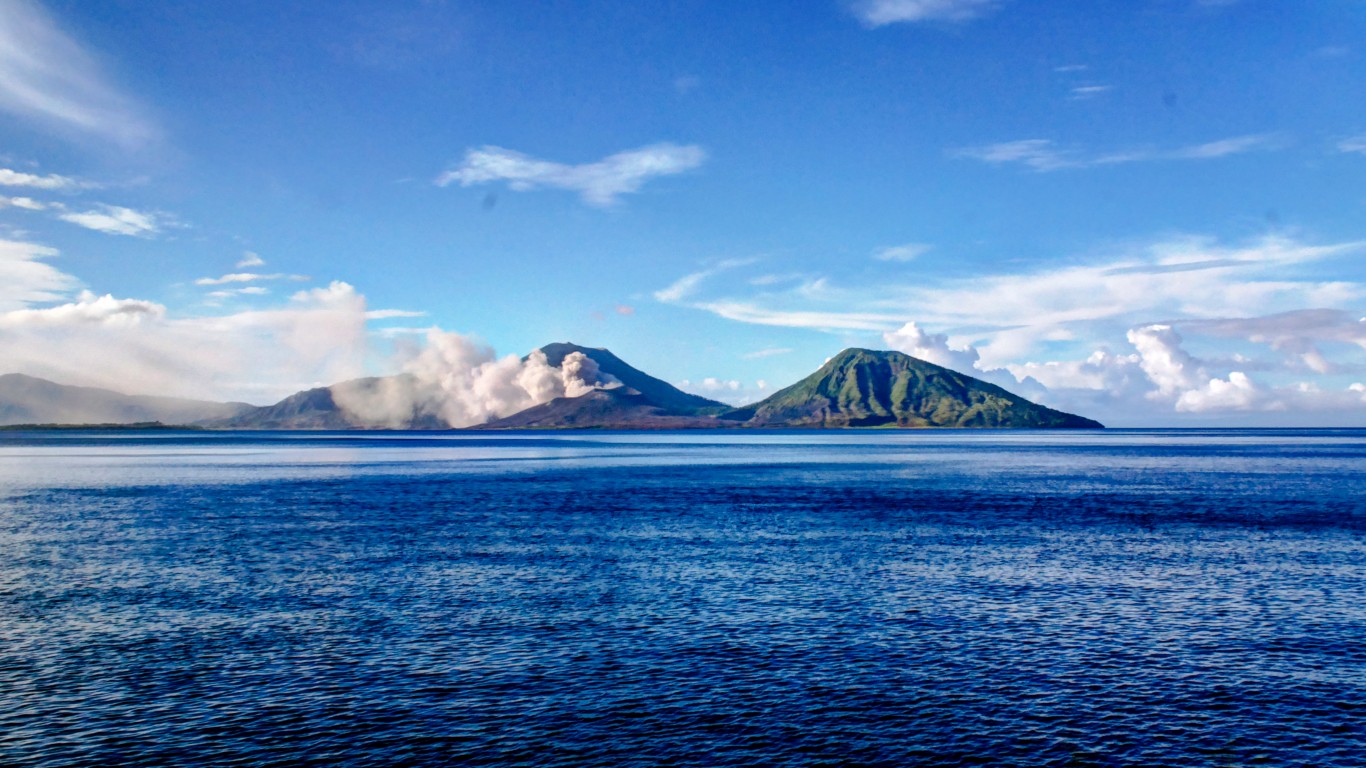
- Average Relative Humidity: 80%
Papua New Guinea is the third-largest island country in the world, which means it has a lot of coastline with access to hot temperatures and warm water. Most of the country is covered by dense rainforests and large wetlands that have prevented human expansion for most of its existence. Papua New Guinea lies within the humid tropics, sharing much of the wildlife that thrives in humid conditions. It is the most diverse floral island in the world with over 13,000 different species of plants.
#11 Indonesia
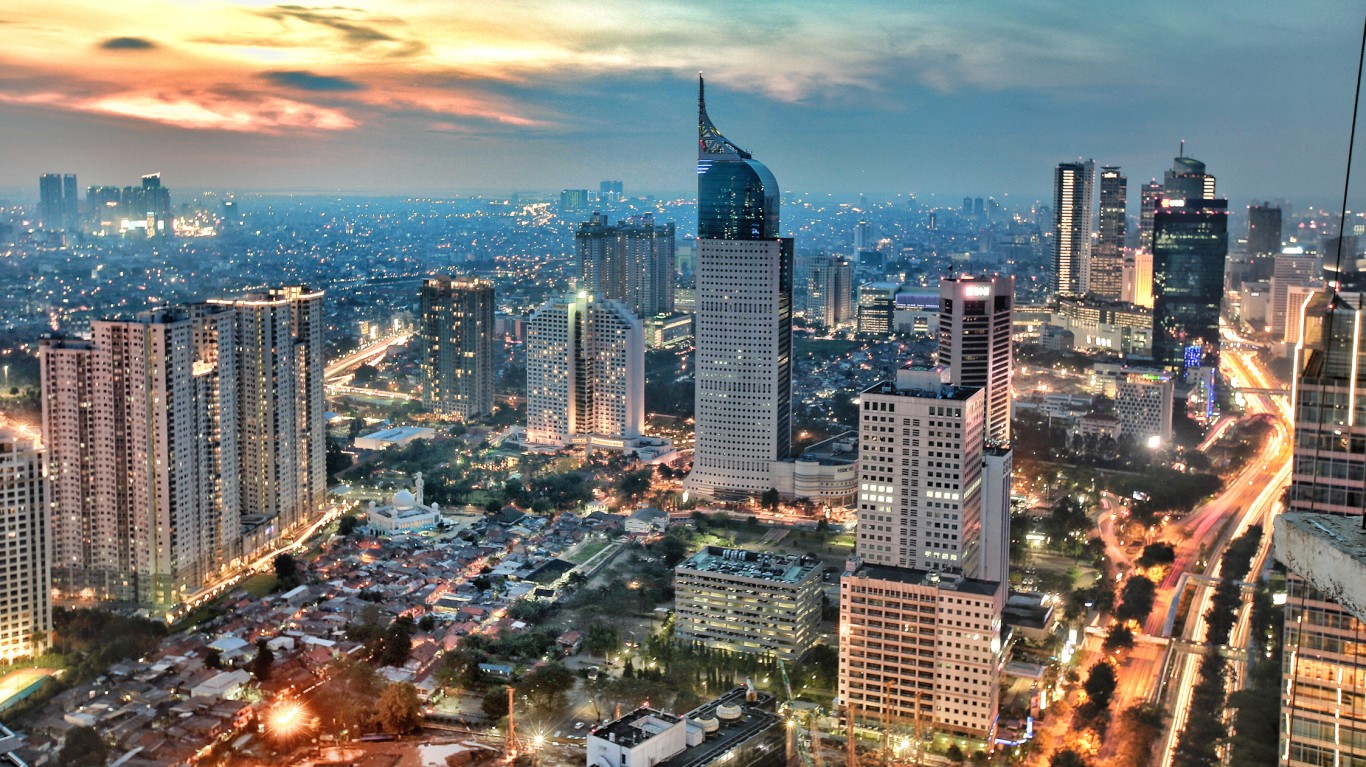
- Average Relative Humidity: 80%
Indonesia is the world’s largest archipelago country, with most of the country consisting of 17,504 islands spread over 3,181 miles from West to East. It lies along the equator with an entirely tropical climate, so long, hot days all year long and extensive coastlines combine for an extremely humid country.
Numerous studies have listed Indonesia as being particularly susceptible to the impacts of climate change. These include severe droughts during the dry season, leading to food shortages, increased wildfires, and more intense rainy seasons.
#10 Myanmar
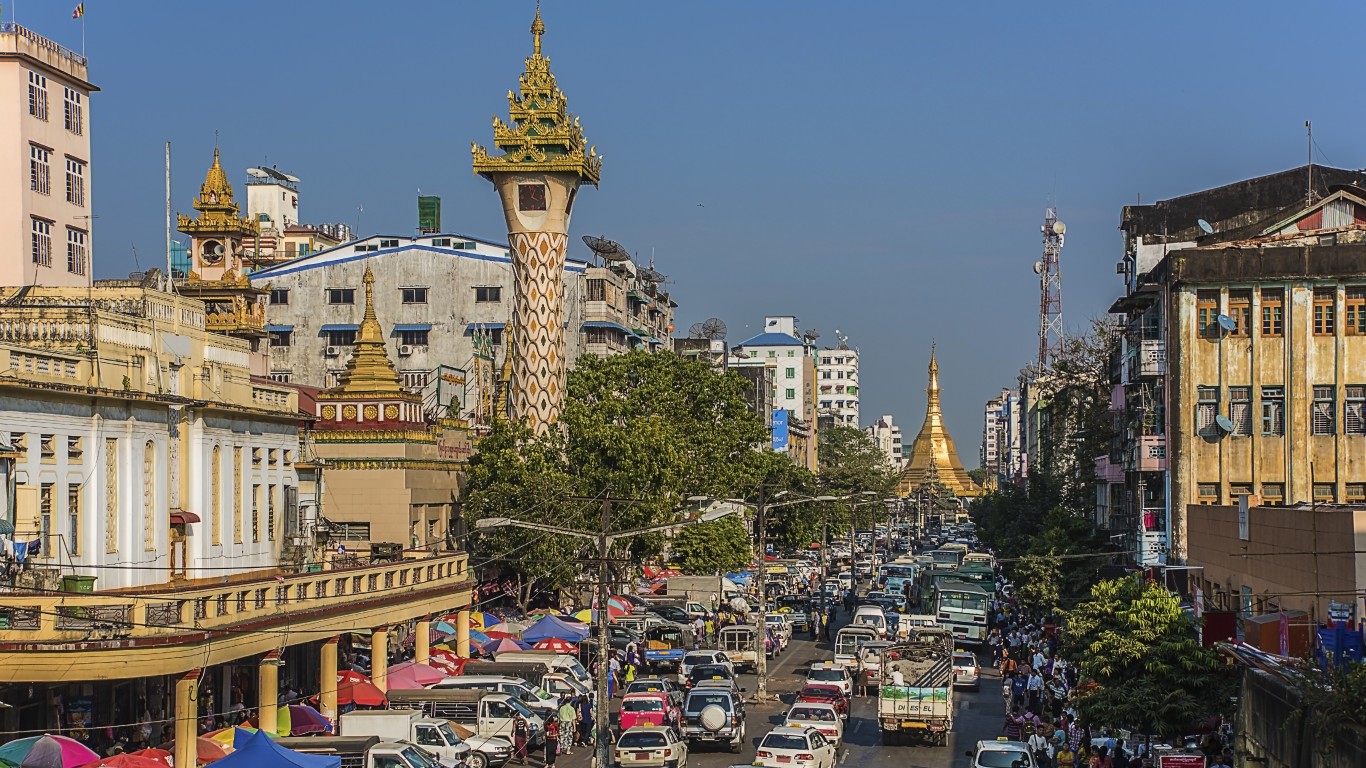
- Average Relative Humidity: 80%
Myanmar lies between the Tropic of Cancer and the Equator, so it receives an exceptional amount of direct sunlight almost all year long. It is also in the middle of the monsoon area of Asia, so it receives up to 196 inches of rain each year along its coast and 98 inches of rain further inland. Like other countries in the region, especially those near the Equator, Myanmar is particularly at risk from rising temperatures and more severe storms. It has pledged to do its part to expand its use of renewable energy to mitigate climate change.
#9 Liberia
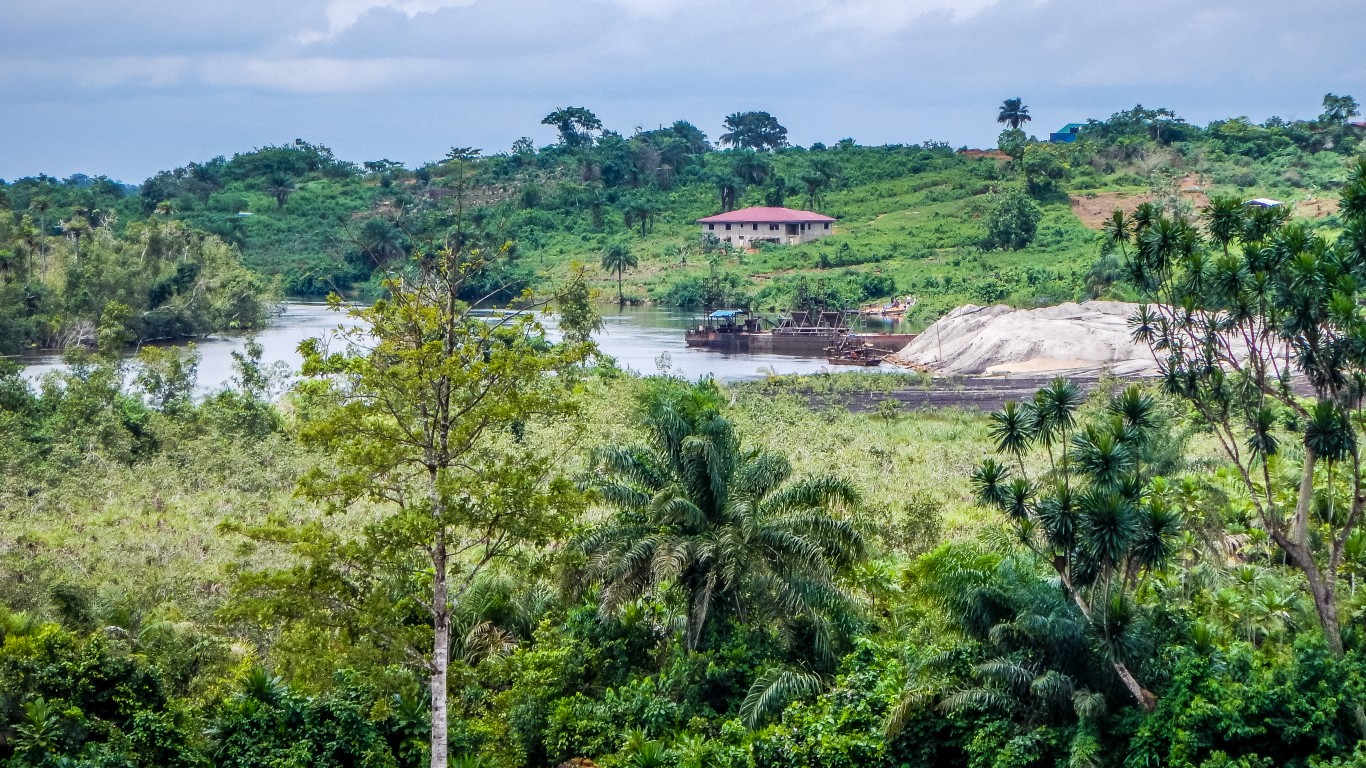
- Average Relative Humidity: 80%
Our first African country, Liberia lies along the Western Coast of the African continent and consists primarily of mangroves, swamps, and flat coastal plains. Large rivers, hot temperatures, and plentiful water contribute to its humid climate. It experiences significant rains from May to October every year. Climate change is expected to severely impact Liberia’s agriculture, fishing, and forest industries.
#8 Brunei
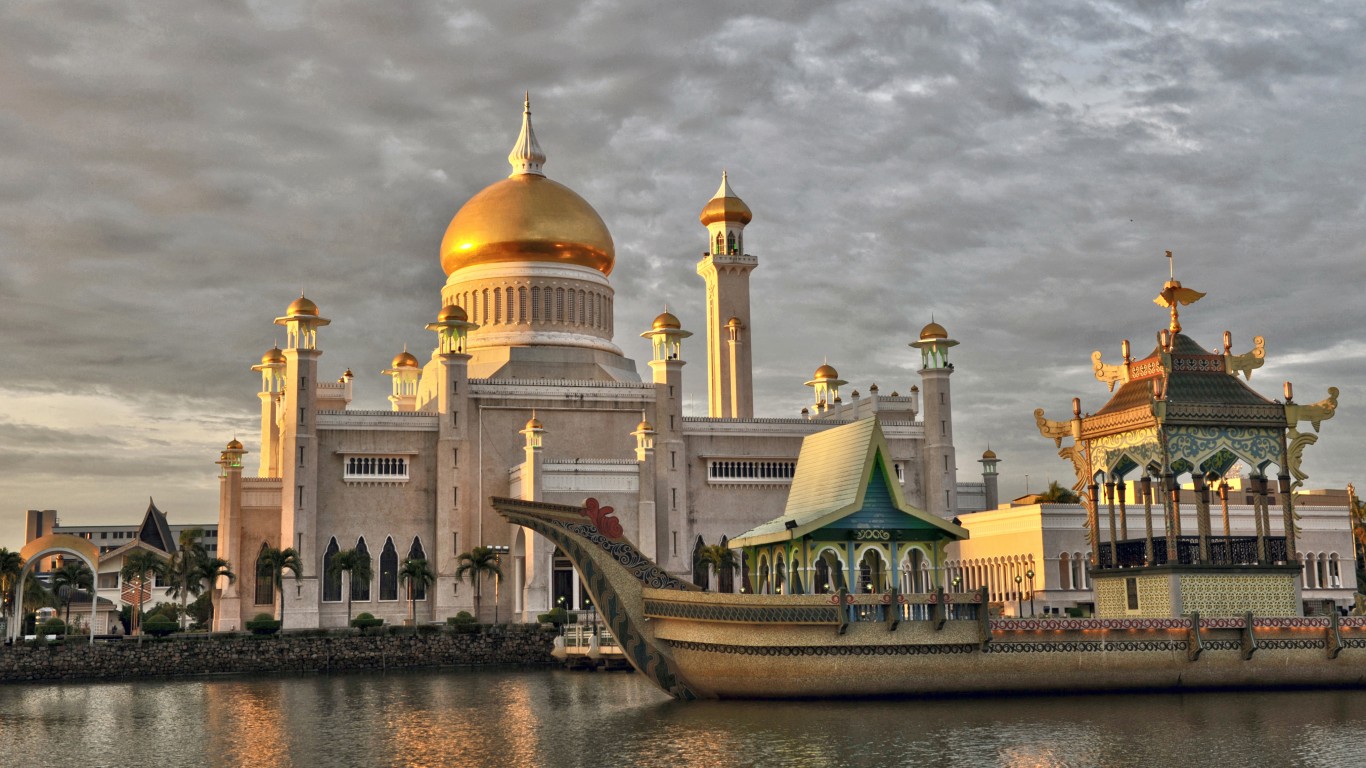
- Average Relative Humidity: 80%
Brunei is actually separated into two parts by Malaysia, which also surrounds it. Most of the country is covered by lowland rainforests, the rest is primarily mountain rainforests. Brunei is a tropical country with a tropical rainforest climate, but it does not suffer from cyclones or typhoons like other countries in the area. Brunei is also one of the only few remaining absolute monarchies in the world, and is ruled by the Sultan of Brunei, and uses a law system based on English common law and Islamic law.
#7 Equatorial Guinea
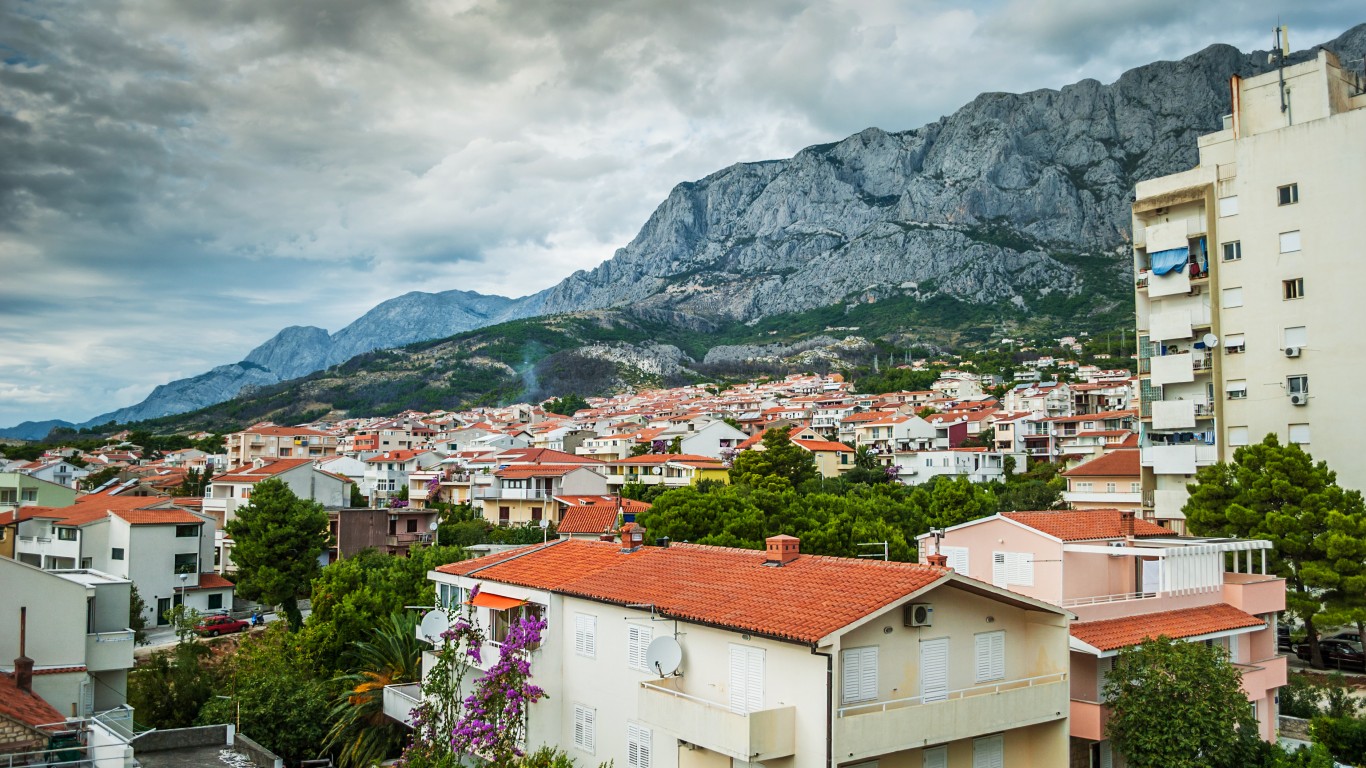
- Average Relative Humidity: 80%
We return to the west coast of Africa for a small (relatively) country and its islands. Though it is named Equatorial Guinea, the country actually lies just north of the Equator, with a small province just barely south of it. Like other tropical countries, it has wet and dry seasons instead of the four we have in more temperate countries. The Annobón region of Equatorial Guinea has never recorded a cloudless day and experiences almost continual rain or mists. Malabo receives about 76 inches of rain every year while Ureka receives a whopping 430 inches.
#6 Colombia
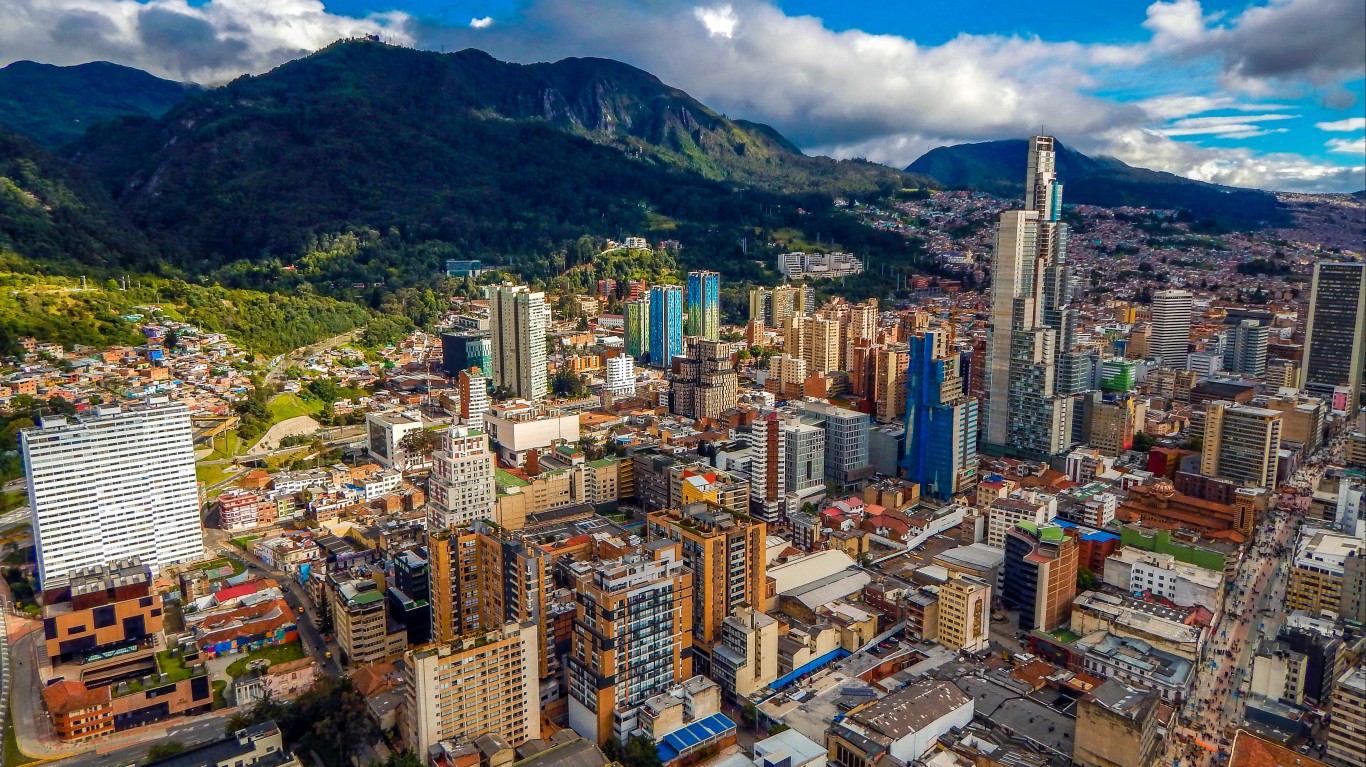
- Average Relative Humidity: 81%
Our first American country. Colombia is primarily located within South America with some island territory in North America. The territory of Colombia can be divided into the Andes mountains it shares with Ecuador and Venezuela, the Pacific Coastal region, the Caribbean region, and the significant Amazon Rainforest. Any country that can combine the Amazon with the Caribbean is sure to be humid and hot. Everything we know about the Amazon Rainforest still holds true where it spreads into Colombia.
Colombia has deserts, savannas, and steppes, in some of the mountain areas, the climate and terrain are glacial with permanent ice. However, the extremely high humidity in the rest of the country outweighs the dryness of these regions.
#5 Suriname
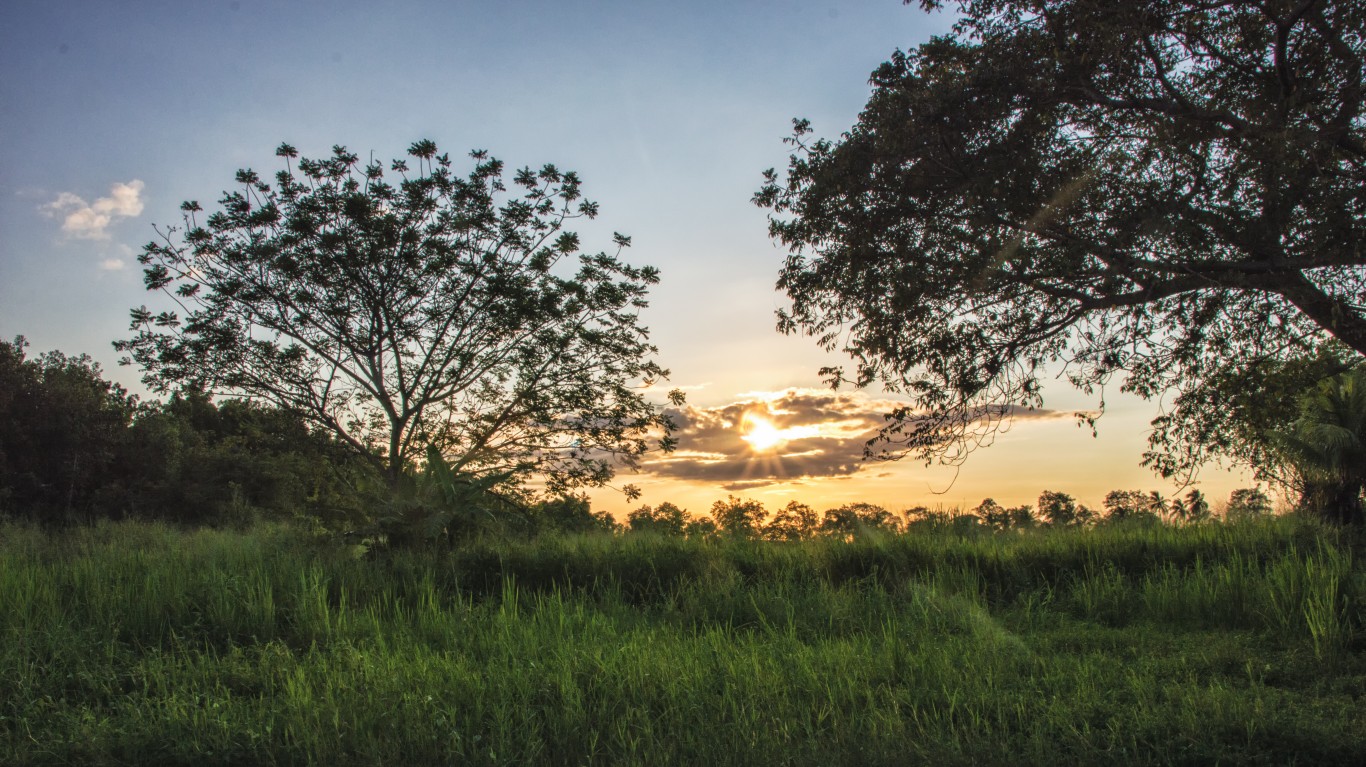
- Average Relative Humidity: 81%
Suriname is the smallest country in South America, with the entire country sitting extremely close to the Equator. The country is divided into two parts: the lowlands where most of the people live, and the tropical rainforest. Forests cover over 90% of the country, which is the highest amount of any country in the world. This dense foliage, hot temperatures, and easy access to water make it the fifth most humid country.
#4 Costa Rica

- Average Relative Humidity: 81%
Costa Rica borders both the Pacific Ocean and the Caribbean Sea. It has a year-round tropical climate and the rainy season stretches from May to November. Costa Rica is the 35th most democratic country in the world, has the 8th freest press, and is the 23rd happiest country. The government has invested significant resources in developing industries and infrastructure to reduce income inequality and the impacts of poverty.
#3 Trinidad and Tobago
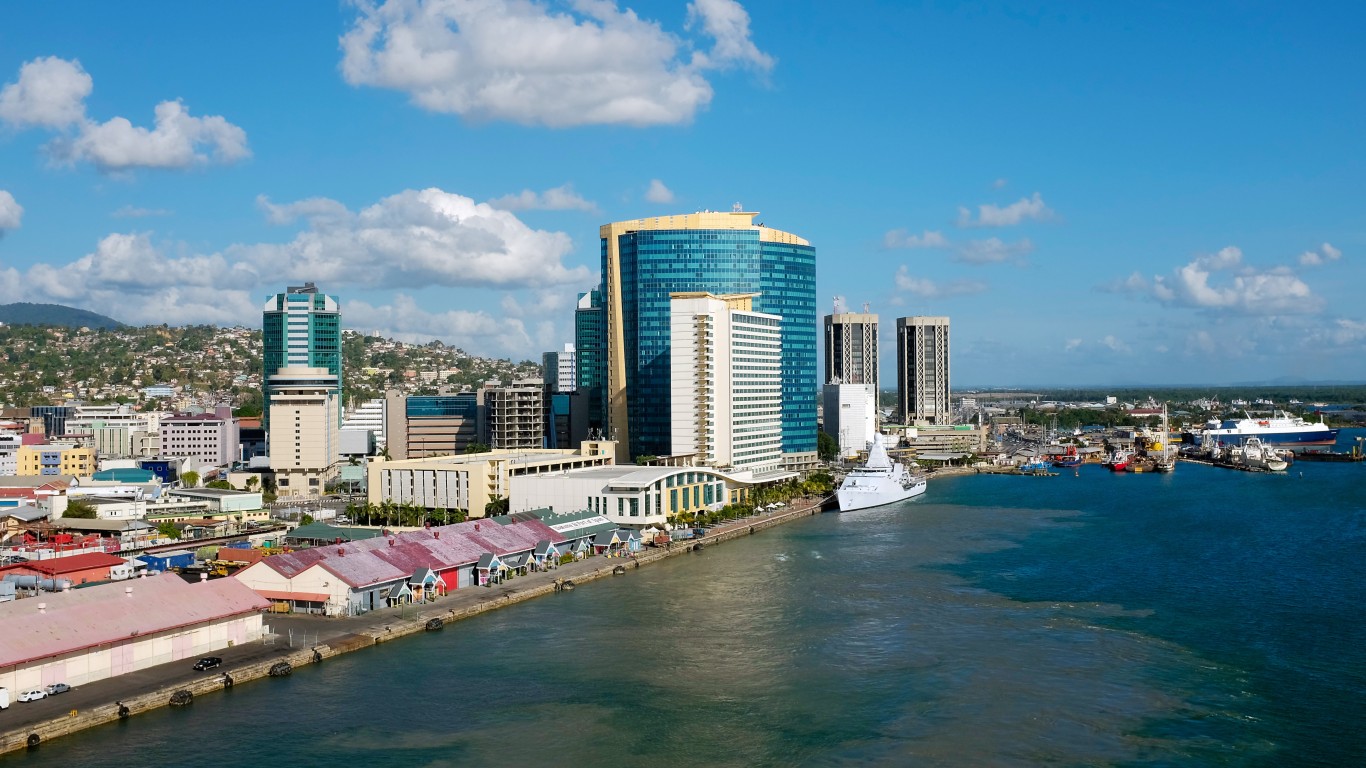
- Average Relative Humidity: 82%
Our first entirely Caribbean country, Trinidad and Tobago is the most southern country in the Caribbean region. Because it consists primarily of islands and sits close to the equator, it is much hotter year-round than other Caribbean islands, and thus more humid. The rainy season stretches over seven months of the year but sits outside the main hurricane alley. Temperatures rarely exceed 100 degrees Fahrenheit or fall below 54 degrees Fahrenheit, retaining the humidity year-round.
#2 Malaysia

- Average Relative Humidity: 83%
As mentioned earlier, Malaysia completely surrounds and bisects Brunei, so it would make sense that if Brunei made the list, Malaysia would also be here. Malaysia is divided into two primary sections, both of which are largely covered by tropical rainforests and jungles. The average rainfall in Malaysia is around 98 inches every year
#1 Singapore
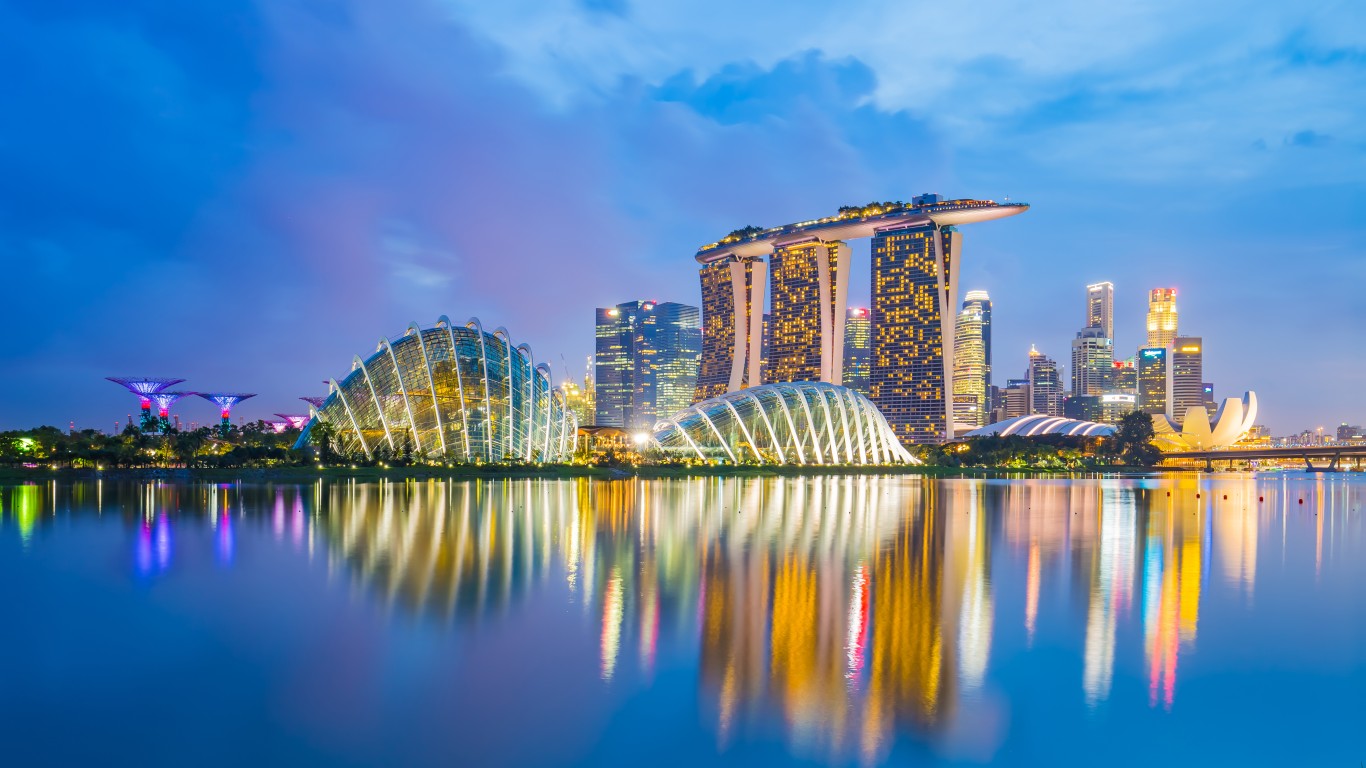
- Average Relative Humidity: 84%
Our smallest and most humid country. Being a tiny island nation so close to Malaysia (and at one point was part of Malaysia) it follows that Singapore would be the most humid since it does not have enough land for high altitudes or dry lowlands to mitigate its humidity ranking.
Singapore has no distinct seasons but experiences high humidity and significant rainfall all year round. Its average rainfall every year is about 92.1 inches, with the most falling in one day being 20 inches in 24 hours. It is not unusual for Singapore to experience humidity in the high 90s every year, and during long rains, it will reach and exceed 100% regularly.
Thank you for reading! Have some feedback for us?
Contact the 24/7 Wall St. editorial team.
